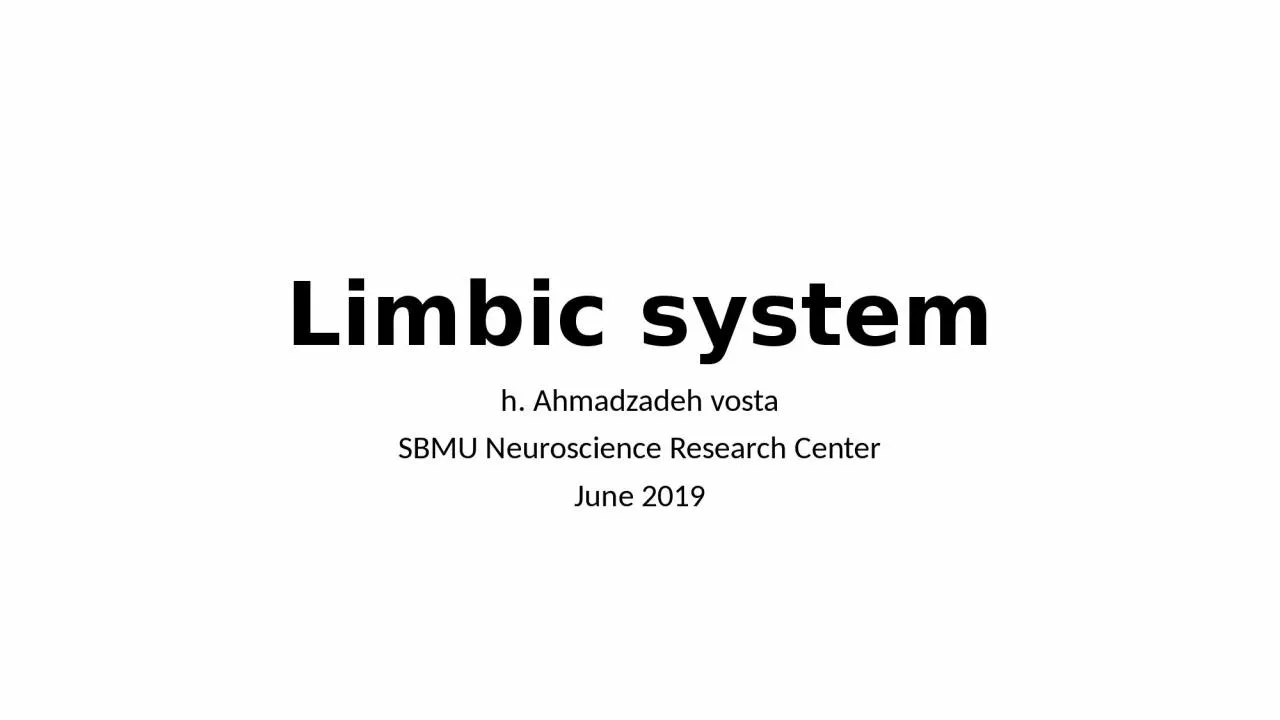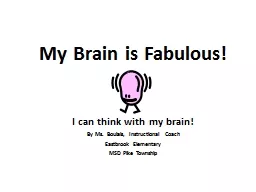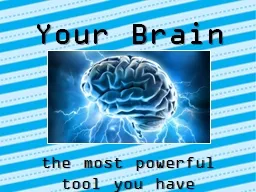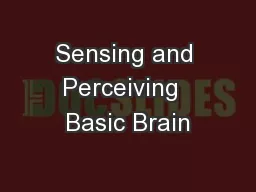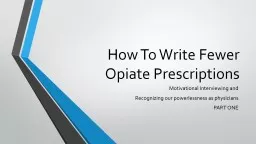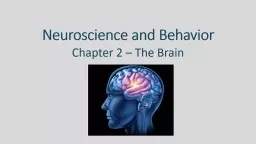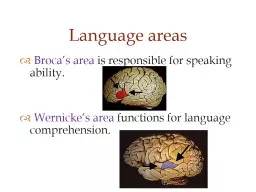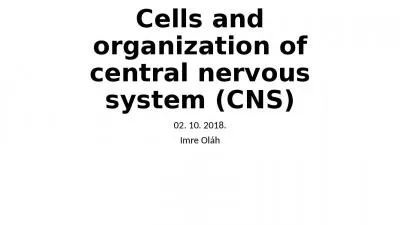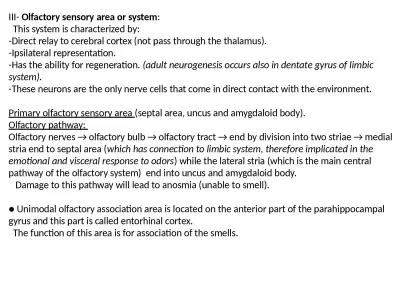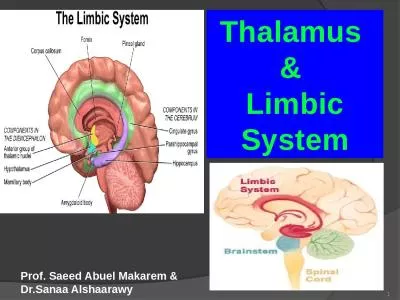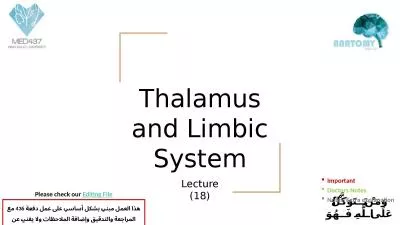PPT-Limbic system h. Ahmadzadeh
Author : gagnon | Published Date : 2024-02-09
vosta SBMU Neuroscience Research Center June 2019 Introduction cortical structures such as the hippocampus and entorhinal cortex cingulate cortex and olfactory
Presentation Embed Code
Download Presentation
Download Presentation The PPT/PDF document "Limbic system h. Ahmadzadeh" is the property of its rightful owner. Permission is granted to download and print the materials on this website for personal, non-commercial use only, and to display it on your personal computer provided you do not modify the materials and that you retain all copyright notices contained in the materials. By downloading content from our website, you accept the terms of this agreement.
Limbic system h. Ahmadzadeh: Transcript
Download Rules Of Document
"Limbic system h. Ahmadzadeh"The content belongs to its owner. You may download and print it for personal use, without modification, and keep all copyright notices. By downloading, you agree to these terms.
Related Documents

